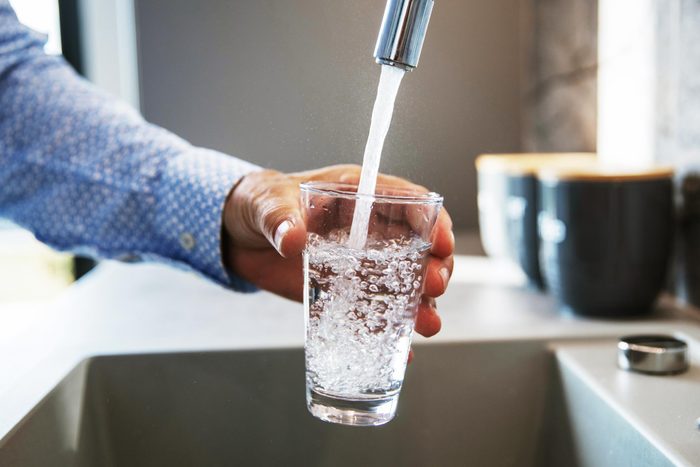
The kitchen tap: A source of refreshment, hydration, and, as a new study suggests, potentially harmful chemicals known as per- and polyfluorinated alkyl substances, or PFAS. Astonishingly, at a time when global temperatures are the highest they’ve been in an estimated 100,000 years and we need to drink plenty of water, at least 45% of the nation’s tap water is estimated to contain one or more types of these substances.
This finding, brought to light by the U.S. Geological Survey, prompts pressing questions about health implications and how to ensure the water you consume is safe.
Here’s How Much Water You Really Need in a Day, with Nutritional Scientists’ Latest Wisdom
What are PFAS?
PFAS are a group of manufactured chemicals that have been in use since the 1940s. Utilized in many everyday products, such as non-stick pans, water repellents and food packaging, their resilience and resistance to water, oil and heat make them remarkably useful—yet environmentally persistent.
How do PFAS get into tap water?
Unfortunately, the properties that make PFAS invaluable in industry contribute to their prevalence in our water supply. These compounds seep into the soil and groundwater from factories, landfills, and other sources, making their way into water supplies that feed into our tap water systems.
What Is Filtered Water and Is It Healthier Than Tap?
Health effects of PFAS
These chemicals are concerning due to their potential impact on human health. Research suggests that exposure to PFAS can lead to increased cholesterol levels, changes in liver enzymes, decreased vaccine response and even increased risk of certain cancers. It’s clear: the presence of PFAS in our water is a public health concern we cannot ignore.
Regulations on PFAS in drinking water
Despite the rising concern, regulations on PFAS in drinking water remain a patchwork. While some states have implemented stringent regulations, federally mandated guidelines only provide advisory levels, not enforceable standards. As a result, the responsibility often falls on local water systems and consumers to ensure the water they consume is safe.
Protecting yourself: How to determine if your tap water is safe
So, how can you learn whether your tap water is safe?
- Request a water report: First, request a Consumer Confidence Report from your local water provider. This annual report provides information about the source of your water and any contaminants detected in it.
- Independent testing: If you’re concerned about your private well or want more specific information about your tap water, consider having it independently tested. Various laboratories offer such services, which can help identify a range of contaminants, including PFAS.
- Research treatment options: If PFAS are detected, research treatment options. Certain types of activated carbon filters and reverse osmosis systems have been found effective in reducing PFAS levels in water.
The new findings from the U.S. Geological Survey offer a wake-up call and an opportunity to better understand the state of our nation’s water. While the presence of PFAS in our tap water is a worrying prospect, understanding and action can help you mitigate risks and ensure our water’s safety.
